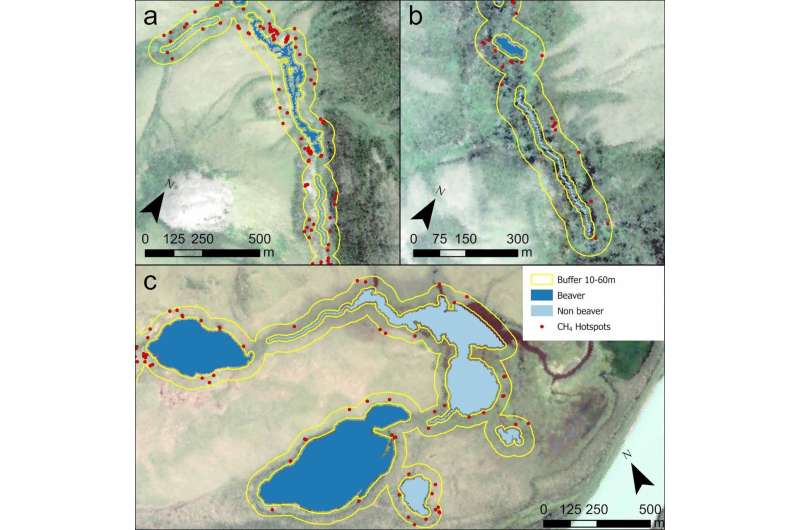Beaver Activity in the Arctic Linked to Increased Methane Emission: A Climate Concern
Introduction:
The pristine Arctic tundra, known for its stark beauty and unspoiled wilderness, is experiencing a subtle yet impactful transformation driven by climate change. Beavers, those industrious builders of dams, have begun to extend their territory into the Arctic, bringing with them unexpected consequences. The newfound presence of these dam-building rodents is linked to an alarming increase in the emission of methane, a potent greenhouse gas. In this article, we will delve into the fascinating findings of a recent study that unveils the complex interplay between beavers, methane release, and the Arctic environment.
The Beaver Effect:
Beavers are renowned for their construction prowess, engineering intricate dams that reshape landscapes. In the Arctic, their activity creates a cascade of events. The dams lead to flooding, transforming once meandering streams into a network of serene ponds. While these beaver-engineered ponds might seem idyllic, they hold a hidden secret – they can become oxygen-deprived and accumulate organic sediment. As this organic material decomposes, it releases methane into the atmosphere.
The Methane Menace:
Methane is a greenhouse gas notorious for its potency in trapping heat within the Earth's atmosphere. In fact, it's approximately 25 times more effective at heat retention than carbon dioxide. As of now, methane accounts for approximately 20 percent of global greenhouse gas emissions. The human footprint has substantially increased atmospheric methane concentrations over the past two centuries. The Arctic, due to its vulnerability to climate change, is particularly sensitive to these changes.
The Study's Key Findings:
Published in July in Environmental Research Letters, a study led by Jason Clark and his team from the University of Alaska Fairbanks Geophysical Institute sheds light on this intriguing phenomenon. The researchers focused on a 166-square-mile area in the lower Noatak River basin in Northwest Alaska, employing cutting-edge technology in the form of airborne hyperspectral imaging through NASA's Arctic-Boreal Vulnerability Experiment program.
Hyperspectral imaging differs from conventional photography by capturing hundreds of wavelengths across the electromagnetic spectrum, many of which are invisible to the human eye. This allowed the researchers to precisely pinpoint methane hotspots and their correlation with beaver ponds.
The study found a compelling connection – a "significantly greater" number of methane hotspots clustered around beaver ponds compared to unaffected stream reaches and lakes in the same vicinity. This is the first comprehensive evidence linking the proliferation of beaver ponds to increased methane emissions on a landscape scale.
The Unanswered Questions:
While the study provides a critical insight into the immediate impact of beaver activity on methane release, it leaves open a tantalizing question: What are the long-term implications of this phenomenon? As the Arctic continues to warm and beaver populations expand, understanding the evolving relationship between these ecosystem engineers and methane emissions becomes increasingly vital.
Conclusion:
The arrival of beavers in the Arctic, driven by climate change, is an unexpected twist in the ongoing saga of environmental transformation. As these industrious creatures reshape the landscape, they unwittingly contribute to the release of methane, a greenhouse gas with significant climate implications. The study by Jason Clark and his team underscores the complexity of this issue, highlighting the need for ongoing research to fully comprehend the long-term consequences of beaver colonization in the Arctic.
In the face of a changing climate, the beaver's humble presence reminds us that even the smallest actors in nature can have a profound impact on the world around us. The delicate balance of our planet's ecosystems is a testament to the interconnectedness of all life, and it is our responsibility to study, understand, and protect these intricate relationships for the benefit of future generations.






0 Comments